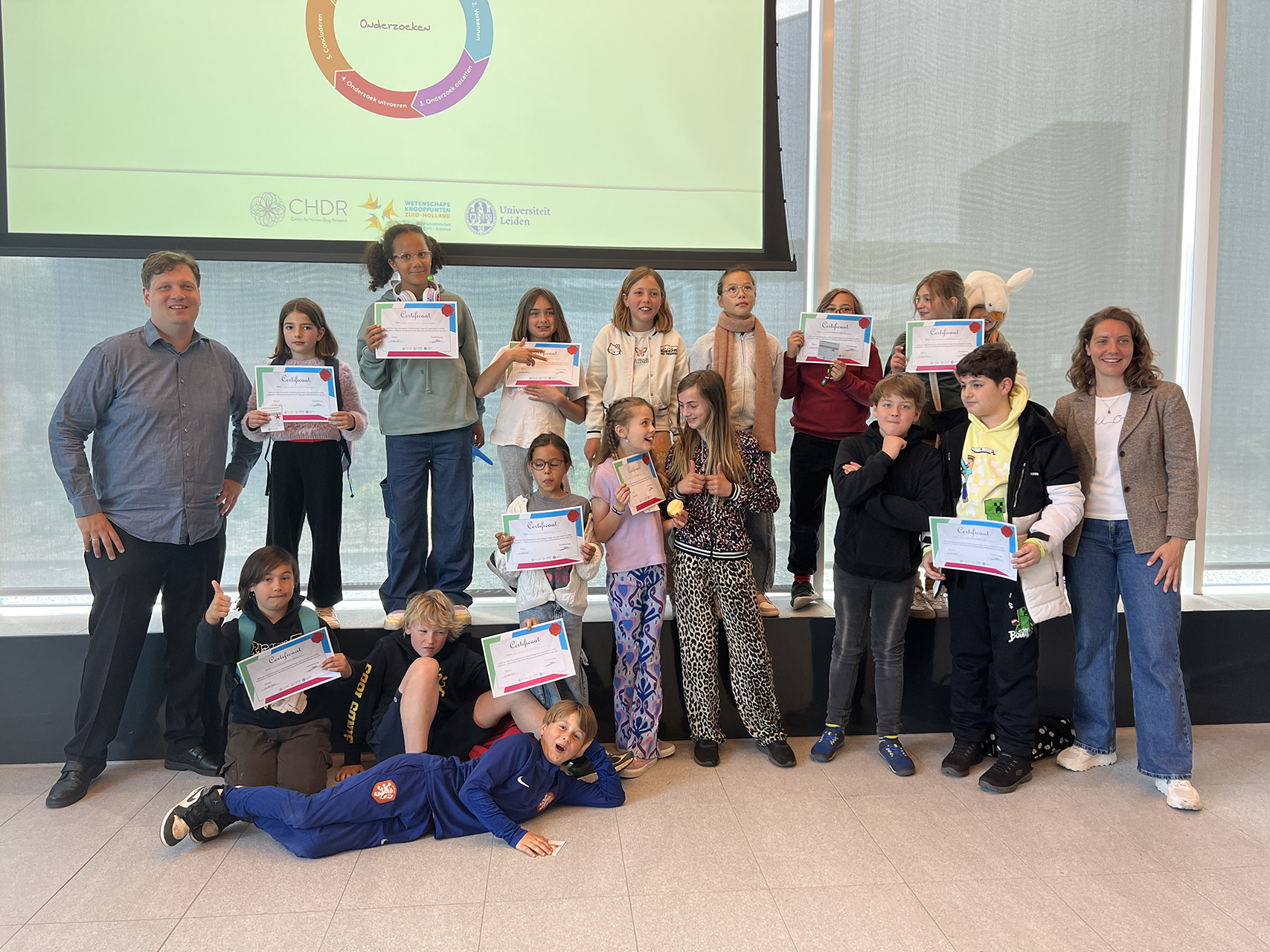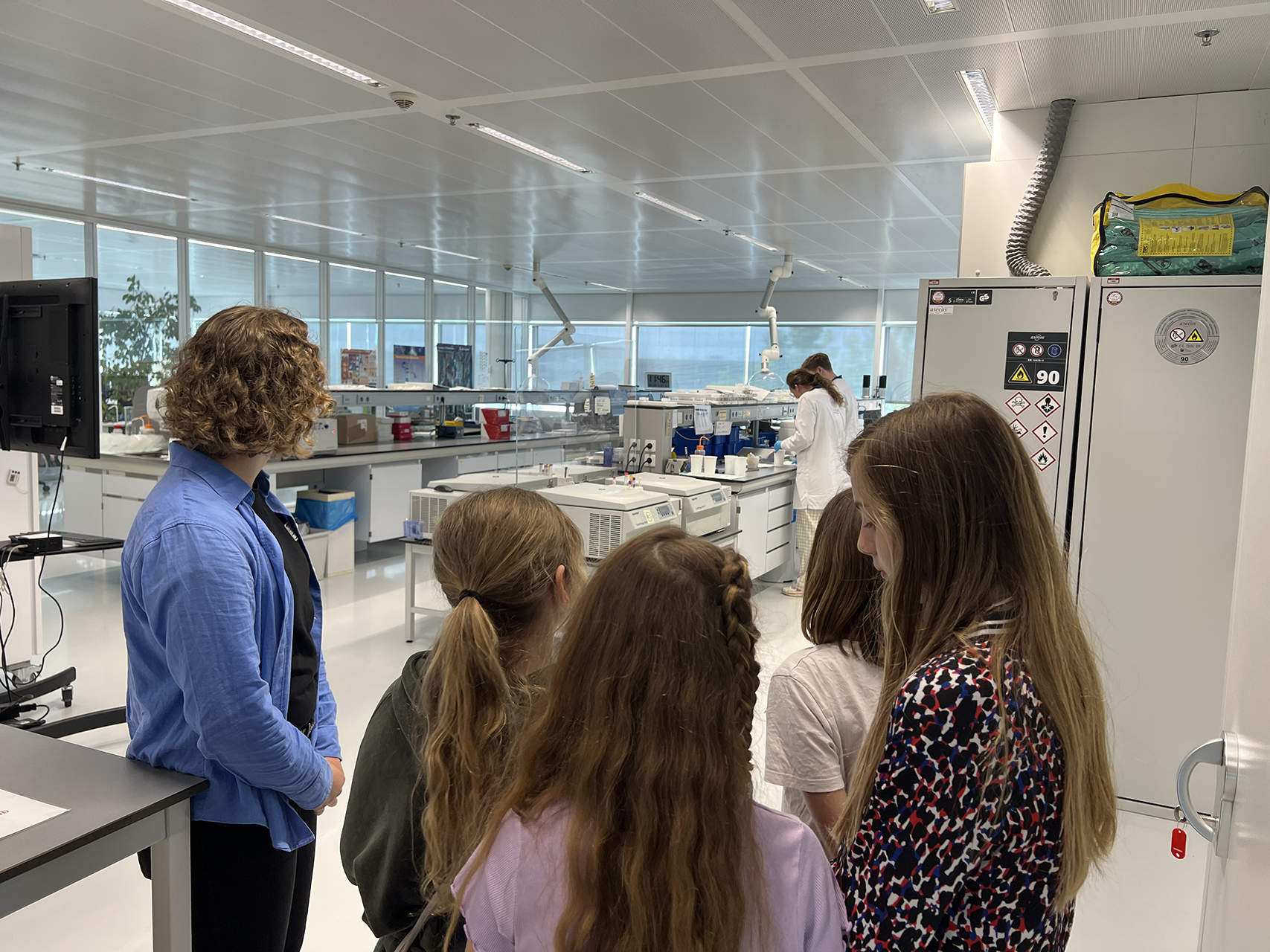
Children learn how medicines work: ‘Some pills go in your bottom!’
Education image: Tom Janssen, Anne Velders
A pill can make you better, but how exactly does it work? Primary school children from The Hague found out during a visit to the Centre for Human Drug Research (CHDR) as part of a new teaching module ‘The journey of a pill’.
Hands are already shooting up before Jeroen van Smeden, Education Director at CHDR, has even started the guest lesson. The children are clearly keen. ‘What do you already know about medicines?’ Van Smeden asks. ‘Some pills go in your bottom!’ one boy shouts, much to the amusement of the class. ‘And some medicines come in injections’, a classmate adds. Van Smeden patiently goes through all the raised hands. ‘Sometimes medicines are good for you, but sometimes they’re poisonous. Why is that?’ one child asks. One girl lists all her allergies and wonders why some people have them.
Sharing passion and knowledge
The primary school was one of the first to sign up for The journey of a pill and won a visit to the CHDR. The Graduate School of Teaching (ICLON) and the CHDR developed the module for years 5 and 6 together. ‘We’re delighted that the Science Hub approached us and that we could create this together’, says Van Smeden.
Anne Velders, an education officer at ICLON, is also pleased with the collaboration between the university and the CHDR: ‘The children learn about what happens in their bodies when they take medicine’, she says. ‘Guest lessons and modules like these give children a glimpse at science, and researchers can pass on their passion and knowledge to a new generation.’
During the lesson, Van Smeden and Velders take the children through the history of medicine. The ancient Egyptians had a remedy for stomach ache 3,200 years ago, made from figs, milk and honey. And 250 years ago, William Withering discovered that the toxin in foxgloves can help treat heart failure. The children listen attentively, often raising their hands. ‘That curiosity is great to see’, says Van Leeuwen. ‘They ask so many questions. If only students did that more often.’
-

Jeroen van Smeden and Anne Velders with the children. -

One child has his blood pressure and heart rate measured. -

The children are given a guided tour of the lab.
Hands-on
After the guest lesson, the children are divided into small groups for a guided tour of the CHDR. Interns show them how to measure the effects of medicines on the brain, heart and skin. The children can also perform tests on each other, and assess their own reaction times. ‘I’m a gamer, so I’m gonna win’, says one boy, who does prove to have a good reaction time. At the volunteer testing area, they see a metal sink-like setup with equipment. ‘This is where we carry out tests to see if painkillers work’, says an intern. ‘You have to put your hand in ice water.’ This gives the children an idea of how drug effects are measured in a research setting.
Misunderstandings about medicines
The CHDR hopes the teaching module will help create ‘a society that understands medicines’, says Van Smeden. ‘There’s still too little information.’ Misunderstandings about how medicines work cause various challenges, he says. ‘Look at the addiction issues surrounding fentanyl and oxycodone use in the US. Even in the Netherlands, people continue taking medication for years without knowing why. If you understand why you're taking something and know what to look out for, you’re more likely to use the medication properly.’ And, he adds, it’s never too soon to start. ‘Children also take medicines and have questions about them.’
The module has already been requested by around 30 schools across the country. ‘We’re really pleased with that. It’s an important form of science communication’, says Velders. ‘It’s how we make science and knowledge available to all.’
The teaching module ‘The journey of a pill’ is available free of charge from Wetenschapsknooppunt. Other ICLON teaching modules can also be found there.
If you are a researcher and would like to contribute to an activity or teaching module for children, send an email to Wetenschapsknooppunt.
